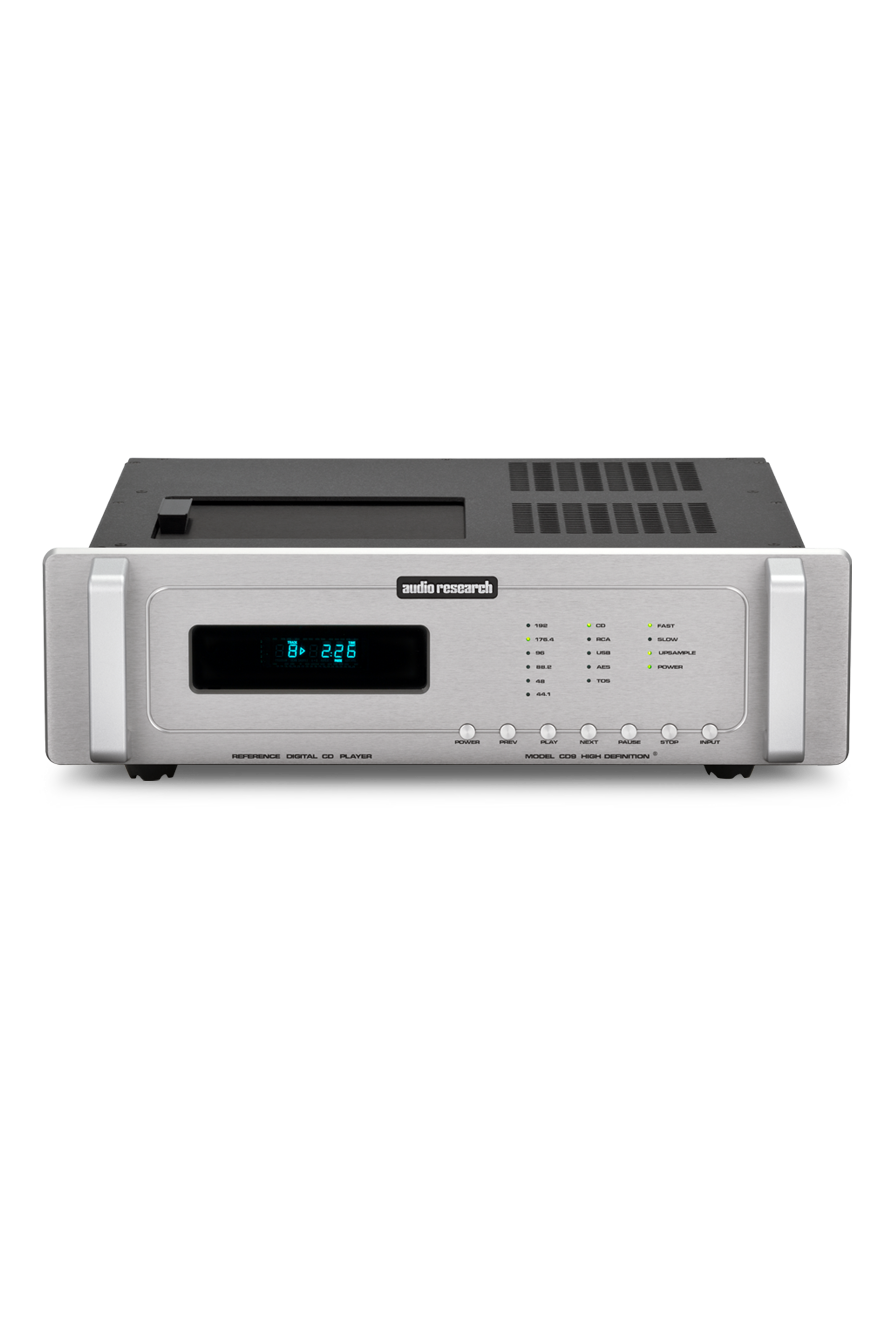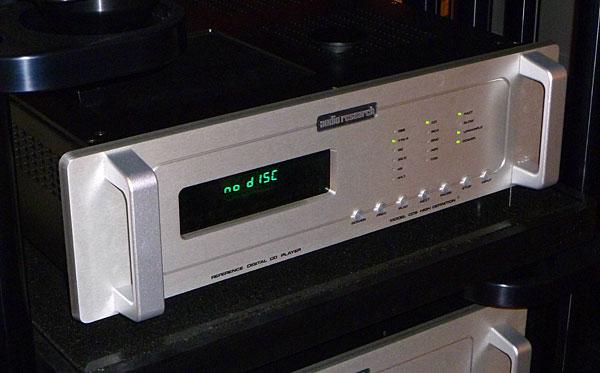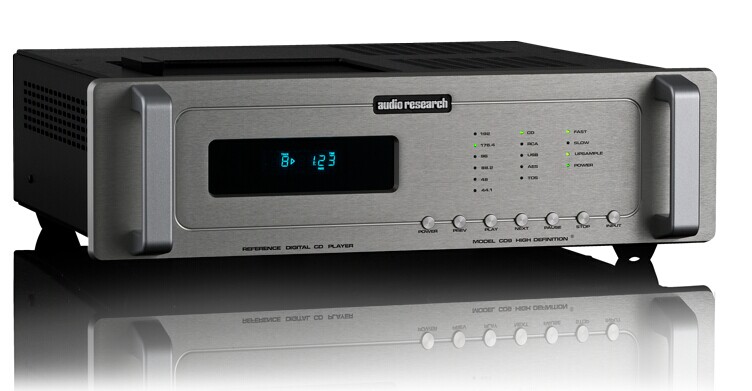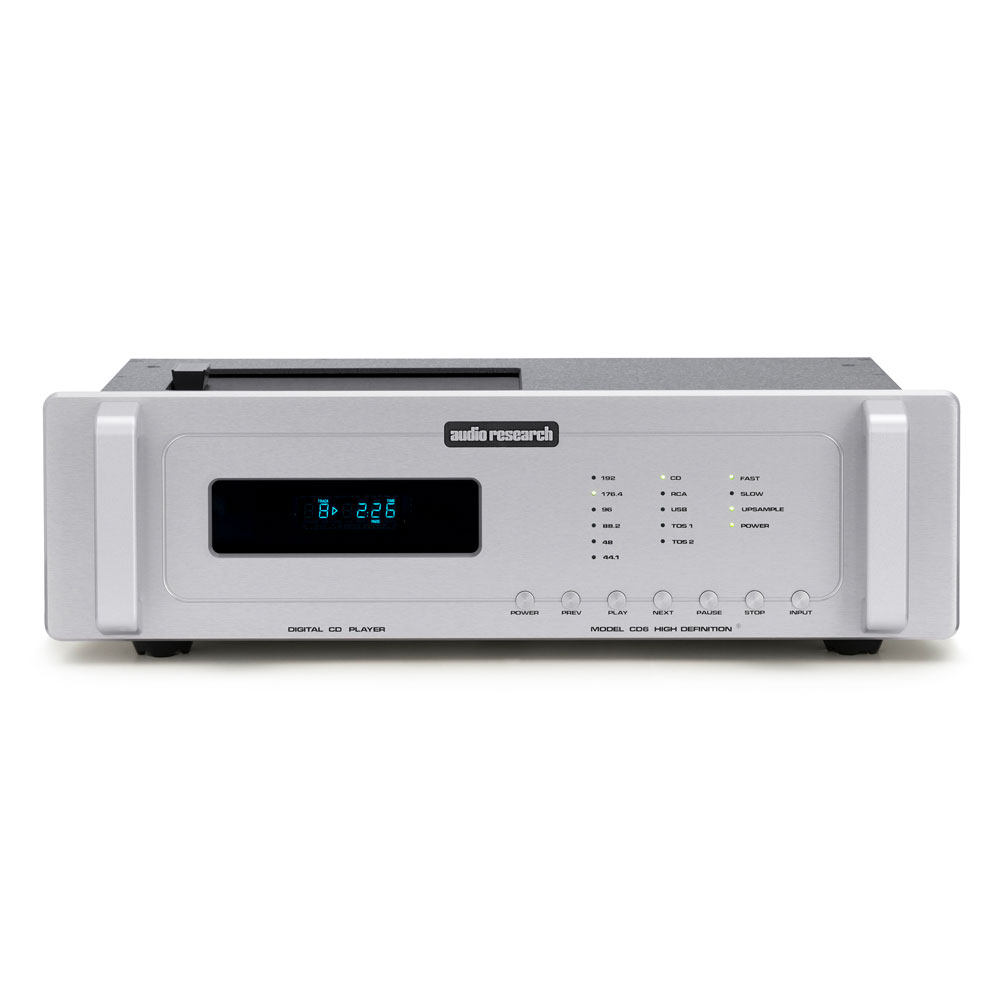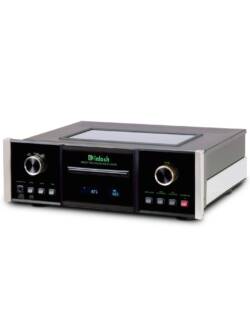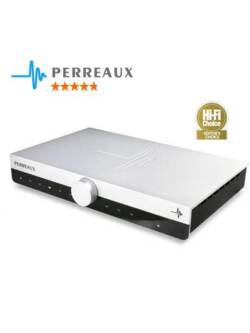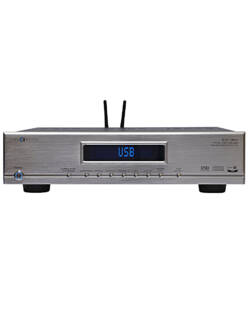Audio Research CD 9 (Silver & Upgraded)
Original price was: R220,000.00.R94,000.00Current price is: R94,000.00.
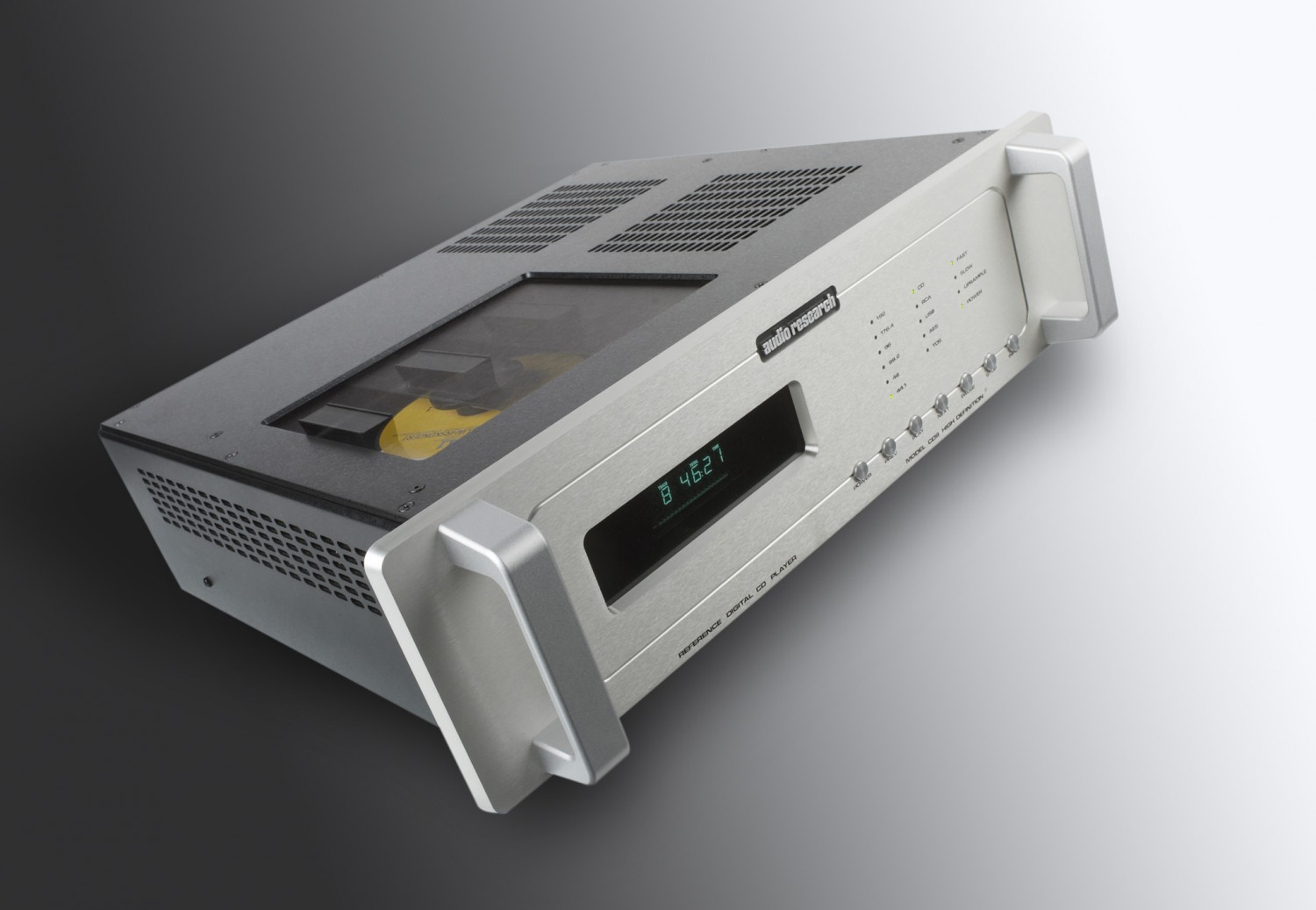
Now entering its fourth decade, the Compact Disc player seems to have reached a stage of maturity where the best models within a given price range will sound pretty much alike. The technology of the Compact Disc itself is set, its possibilities and limitations are well understood; and the designers of CD players who figure out how to stretch the former and finesse the latter wind up at about the same sonic place (again, for the same price), even if they’ve taken different routes to get there. What distinguishes these players in the marketplace tends to be not so much their sound quality as their features, and the world of digital audio has expanded in ways that make features very important—some of them, anyway.And so we have the Audio Research Corporation’s Reference CD9 digital-to-analog converter and CD player, which, at $12,999, costs about the same as my Krell Cipher SACD/CD player ($12,000), but is so different in design and function that it offers a good test of my theory on converging sound qualities. In the May 2012 issue, I called the Cipher “a great CD player: the best I’ve heard in its price range, and the best I’ve heard, period, in my home system.” How does the Reference CD9 stack up? What can each player do that the other can’t, and does it matter? What does the very existence of such machines, near the peak price for a single-chassis player, say about the future of high-end audio?
Description
The Reference CD9 is a top-loading player that uses Philips’s CD Pro2 transport. The drive rests on a ½”-thick metal I-beam that extends the player’s full depth. Four 6H30 dual-triode tubes drive the analog section; a fifth 6H30 and a 6550C regulate the power supply. ARC claims that its use of four digital-to-analog converters (two per channel, each in dual-mono mode) reduces the digital noise floor by 3dB (ie, doubling the number of DACs doubles the signal’s amplitude while keeping the noise the same). Power is handled by a custom transformer that, according to design engineer Dennis Petrich, has no gaps or breaks in the material of its R-core and thus more efficiently contains the flux field, with much less leakage, resulting in less distortion and a higher signal/noise ratio. Jitter reduction (to <10 picoseconds, according to the spec sheet) is handled by a crystal-controlled reclocking mechanism.
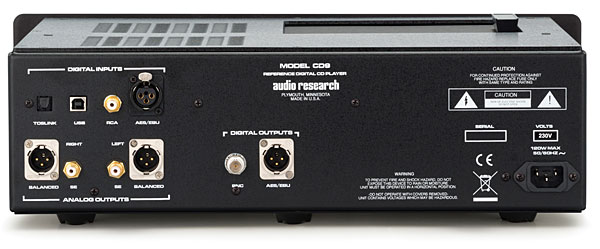
In its most up-to-date feature, the CD9’s rear panel has not only digital outputs but also five digital inputs—S/PDIF on RCA, BNC, and TosLink, AES/EBU on XLR, and USB—for outboard digital devices or digital streaming. (The player comes with a CD-R carrying the necessary driver programs for Macs and Windows PCs.) Once you’ve pushed a button (on the CD9’s front panel or its remote control) that activates one of these digital inputs, you can set the bit rate to 24 and the sampling rate to 44.1, 88.2, 96, or 192kHz, depending on the source signal. (You can also set it to play at the source’s native resolution, whatever that may be.) The DACs are also equipped with dual oscillators, so that music at 44.1kHz (or doubled to 88.2kHz or, from there, to 176.4kHz) uses one of the oscillators, while music played at 96 or 192kHz uses the other.
Finally, when you’re spinning discs, the CD9 allows you, with a push of a button, to upconvert the sampling rate from 44.1 to 88.2kHz. Another button lets you select the digital filter: Fast (a brick-wall filter at the highest frequency) or Slow (a filter with a more gradual rolloff).
For those familiar with Audio Research CD players, the Reference CD9 is the same as the CD8 (released in 2010 at a price of $9995), except for its digital inputs, the selectable filters and upsampling options, and the circuitry that facilitates them: the four DACs (vs the CD8’s two), the two master oscillators (vs the CD8’s one), the greater bandwidth of the analog circuitry, and the sample-rate display on the front panel.
Setup
I hooked up the Reference CD9 to a system that included the Simaudio Moon Evolution 700i integrated amp, Revel Ultima Studio2 speakers, and Nirvana cables. I usually place Black Diamond Mk.4 Racing Cones under all electronic components and plug all hi-fi gear (except amps) into a Bybee Technologies Signature Model Power Purifier. But David Gordon of Audio Research urged me not to do this, at least at the outset, so I let the CD9 stand on its own Sorbothane feet and plugged its power cord straight into the wall—in my case, into hospital-grade sockets wired to a dedicated 20-amp circuit. He was right: the player sounded a little better without the usual aids.
I played lots of CDs, occasionally pushing the buttons on the remote control to switch between straight 44.1kHz and the same datastream upsampled to 88.2kHz, and from the Fast (brickwall) to the Slow (gradual rolloff) filters. (About my findings on these matters, more later.) ARC recommends 600 hours of break-in; I gave the review sample three weeks of continuous play before settling down to serious listening. I conducted several A/B comparisons with the Krell Cipher. To check out the CD9’s digital inputs, David Chesky, of Chesky Records and HDtracks, brought over a MacBook Pro and an external hard drive loaded with Audirvana software and lots of high-resolution tunes from the Chesky catalog (mainly in 24/192, but a few in 24/96), which I compared with CDs and, when possible, LPs of the same titles.
Sound
As a CD player, the Reference CD9 was simply excellent. This wasn’t a surprise, given Audio Research’s track record. What was a surprise—and what takes me back to the proposition at the top of the review—is that it sounded almost exactly like the Krell Cipher, even though the Cipher has a front-loading transport (it’s not a top-loader), transistors (not tubes), two DACs (not four), and proprietary circuitry that manipulates audio signals in the current domain (not the voltage domain). Often, two similarly high-priced components may both “sound good” but have different strengths and weaknesses, which in many cases stem from their designers’ different preferences or trade-offs. A review that compares two such models generally identifies those trade-offs, weighs the differences, and concludes which player might be better or worse for various kinds of music or taste. Usually, the differences are pretty clear.
Not so with the CD9 and the Cipher. In fact, if you crept into my house, swapped out one for the other without telling me, and put on a disc that I know well, I probably wouldn’t notice anything amiss unless I listened very closely, and even then the difference would be small; if you revealed the substitution and told me I was stuck with it, there was no going back to what I had before, I wouldn’t be upset; I might even shrug.When I did my first A/B comparison of the players and found them sounding more similar than any two components of any sort that I’d ever heard in my system, I dug out my review of the Cipher and the listening notes I’d made for it. If I could count on readers’ amnesia (and editors’ frenzied rush), I’d be tempted to copy and paste entire sentences, even paragraphs, from that piece to this, and get on with my day.
But I won’t. After all, I did say, a few paragraphs up, that the two players sounded “almost exactly” alike. There is something to write about in this section of the review. In the end, as you’ll see, I even have a preference, though a modest one, for one player over the other. First, though, I’ll elaborate on the similarities—that is, I’ll describe the ways in which the Reference CD9 is a wonderful-sounding CD player.
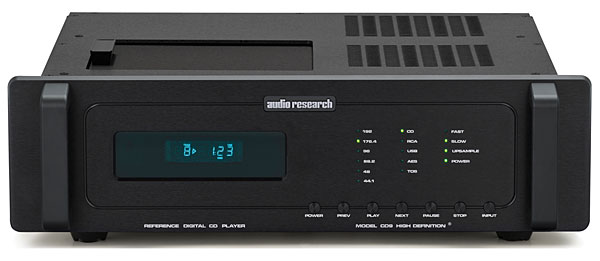
I heard in the CD9 the same knack for untangling a musical passage’s subtleties that I’d noted about the Cipher. There was the same “showering light on the tonal colors of a voice, an instrument, or an ensemble”; the same airy highs and subterranean lows; and the same palpable soundstage, on which were carved, across and from front to back, the same sharp, but not Etch-a-Sketch–sharp, images.
In David Zinman and the London Sinfonietta’s recording of Górecki’s Symphony 3 (CD, Elektra Nonesuch 79282-2), my favorite CD for revealing half of what there is to know about a hi-fi component or system, the bass lines are very clear; there’s no smudging when the double basses and cellos crisscross or overlap, and the same is true a bit later of the polyphony between violas and violins. In Miles Davis’s Live Around the World (CD, Warner Bros. 46032-2), I could hear all the breath and occasional slight sputtering on Miles’s mouthpiece and the full wall-to-wall, floor-to-ceiling ambience of the halls where he and the band played. In Lorraine Hunt Lieberson’s recording of J.S. Bach’s Cantatas 82 and 199, with Craig Smith and the Orchestra of Emmanuel Music (CD, Nonesuch 79692-2), her voice was upfront and palpable, the strings backing her sweet and silky. In Radiohead’s In Rainbows (CD, TBD Recordings TBD 0001) and Sheryl Crow & Friends’ Live in Central Park (CD, A&M 06949-0574-2), the guitars wailed and glittered, the drums pounded and snapped, the rhythms rocked with a danceable joy. In Duke Ellington’s Masterpieces by Ellington (CD, Columbia/Legacy CK 87043), especially “Mood Indigo,” the double bass plucked just behind the beat with just the right shade of lazy blues. And in “Resting on the Round,” from Don Pullen’s Sacred Common Ground (CD, Blue Note 8 32800 2), the shifting rubato in Pullen’s piano solo was heartbreaking.
In short, the Reference CD9 captured intertwined layers of musical detail—rhythmic, harmonic, textural—while preserving the emotional heart of a song. Kind of like the Krell Cipher did.
In detail against the Krell Cipher The differences? Audiophiles who’ve been around for a few decades remember when tubes and solid-state were worlds apart: tube gear (to oversimplify just a little) tended to be warm but tubby; solid-state tended to be fast but cold. This hasn’t been true for quite some time now, though the two types of amplification still lean in those directions, however slightly. Imagine that the difference between the typical tubed and typical transistor components of 30 years ago was as wide as your outstretched arms. By that measure, the difference between the tubed Reference CD9 and the solid-state Cipher is roughly the distance between your thumb and index finger held an inch apart. And even then, I wouldn’t call the CD9 at all tubby—or the Cipher at all cold.
To put things starkly: the Krell was a bit better on the leading edge of a transient attack; the Audio Research was a bit better on the overtones’ bloom. Back to Górecki’s Third Symphony: 14 minutes into the first movement, when the double basses practically growl (and two minutes later, when they do it again), the Cipher let me hear more of the hard bowing, more of the growl; through the CD9, this passage sounded a bit restrained, a bit softer. Then again, in the movement’s opening few minutes, the Reference CD9 let me hear more of the differences between the double basses and the cello—not so much the different notes they were playing, but the different resonances of the wood.
In “Nuages,” from James Carter’s Chasin’ the Gypsy (CD, Atlantic 83304-2), the Cipher let me hear more of the bells, drums, and triangles—and more of the rhythms within rhythms that they’re sounding—while the Reference CD9 let me hear a bit more of the difference between the steel-string and nylon-string guitars: not in the strumming, but in the way the strings sounded their notes or chords afterward. At the opening of “15 Step,” from Radiohead’s In Rainbows, the Krell let me hear more of the percussive scraping—not just the explosive transients, but the silences between them; played through the Audio Research, the scraping sounded a bit smoothed-over. The same was true of the start of Bach’s Cantata 82, “Ich habe Genug,” from the Lieberson recording: the Krell let me hear more of the violinists’ attack on the strings; the ARC made the strings sound a bit more homogenous, though it also let me bathe a bit more in their sweetness.
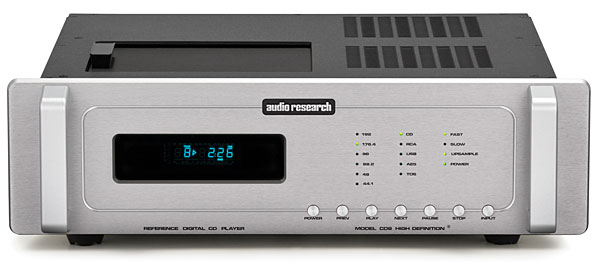
Again, I have to emphasize that these differences were slight; had I not been listening closely, critically, I might not have noticed them at all. But they were there. If I had to measure the balance of these slight differences (in the metaphor of the outstretched arms vs a thumb and forefinger an inch apart), it would be in centimeters, maybe millimeters. Nonetheless, there was a point when I was finished with my listening notes, I still had both players on hand, and I was about to resume listening to music simply for pleasure. Which player did I choose? The Krell. But I stress here that my choice had more to do with my personal preferences than with the players’ relative merits; I can easily imagine others choosing the Reference CD9, and I wouldn’t judge them “wrong.”
But on to the Reference CD9’s features—and features, as I suggested at the beginning, constitute the most dramatic differences between players at this vaunted level. First, the selectable filters and the upsampling options: I found these fairly useless. I toggled back and forth between them while playing a couple dozen CDs, and could find no disc that sounded better when I set the player on the Fast filter; they all sounded better, in some cases significantly so, through the Slow filter. Upsampling was a different story. At first blush, pushing the Upsample button (eg, upconverting a standard CD from 44.1kHz to a simulacrum of 88.2kHz) seemed to enrich the sound, but after listening to several discs, I realized that it was just adding a sheen to the music—a pleasant sheen, but a sheen nonetheless. If a CD natively sounded threadbare, pushing the Upsample button made it sound better in the way that well-designed tone controls sometimes do; I suspect the same might be true for stereo systems that are a bit cold in the midrange. But for good-sounding discs and good-sounding stereos, the effect was more like turning up the Brightness or Contrast setting on an HDTV: it looks attractive on the showroom floor, but gets a bit wearying with frequent exposure.
HDTracks hi-rez tracks
The Reference CD9’s main attractions, when it comes to features, were its digital inputs for streaming and other digital music servers. And the CD9 was very good indeed used in this mode. Hi-rez downloads from HDtracks sounded superb, almost “analog-like”: much better—more dynamic, detailed, and tonally true—than CDs played on either the Reference CD9 or the Krell Cipher. (It’s for good reason that, at the last high-end audio show I attended, three-fourths of the dealers were spinning LPs or streaming through USB-DACs; only about a quarter were playing shiny aluminum discs.) The hi-rez files still fell short of vinyl’s natural dynamics, but they came very close.
Conclusions
One other difference between the Audio Research Reference CD9 and the Krell Cipher is that the latter also reads SACDs while the former does not; nor do its sampling options include one for DSD. I have a fair number of SACD/CDs in my collection, and they do sound better when played on a machine that can read the SACD layer—one more reason why, given the choice, I’d give the (slight) nod to the Cipher. But if you never caught the SACD bug (it was a brief flare-up), if you’re into digital streaming (the trend in high-end audio), if you’d rather not have to stack and wire another box (ie, if you’d rather not have an external USB-DAC), and if you still have lots of CDs (and you’d rather not burn them all into some cloud), then the Reference CD9 may be for you. It’s a superb machine for spinning CDs and streaming hi-rez downloads, and a superb source for music today and tomorrow.
